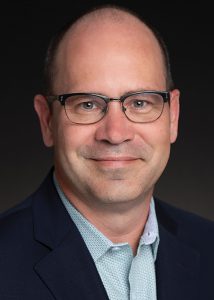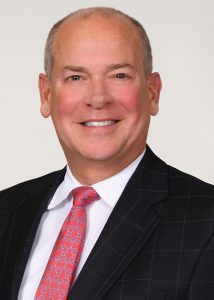MEDICAL STOPLOSS
Helping more employers fight
the effects of inflation
By Len Strazewski
When the World Health Organization declared the COVID pandemic more than three years ago, self-funded employers and their stop-loss insurers steeled themselves for a tsunami of medical claims. Hospitals were at capacity and before vaccines became available, health insurers feared the worst.
But the tsunami never came. As social medicine prevention programs took hold, employers sent their employees home to avoid infection and government programs began picking up some costs as part of catastrophic relief programs.
Instead of rising, medical claims costs dropped as employees delayed serious and expensive claims such as orthopedic replacements and other postponable procedures to avoid exposure to COVID and infected patients in hospitals.
Now the pandemic is mostly over, employees have returned to work, hospitals have bed space available and surgeons have openings in their schedules. Expensive new treatments such as gene and cell therapy for cancer and immune system disorders are available—for $1 million or more an infusion—and catastrophic claims are on the rise, insurers say.

“What we are seeing is a significant increase in claims, with costs inflated by several points of medical inflation.”
—Jay Ritchie
President
Tokio Marine HCC-Stop Loss Group
“Catastrophic claims are not coming from COVID,” explains Jay Ritchie, president of Tokio Marine HCC-Stop Loss Group, in Houston, Texas. The COVID crush left a backlog of other claims, such as knee and hip replacements that are expensive and high volume, but generally voluntary.
“These procedures are driven by hospitals and health systems seeking revenue recovery,” he explains. “What we are seeing is a significant increase in claims, with costs inflated by several points of medical inflation.”
While employers are being saddled with a new generation of very expensive life-extending claims, cancer treatment is still the most expensive to breach stop loss, according to Anna Leifeld, president of the Pacific Northwest region of Amwins, a Charlotte, North Carolina-based specialty broker. But other traditional expensive claims are becoming more accessible, such as dialysis, organ transplants, and other treatments.
“Exclusion is extreme,” she says, “so stop-loss insurers have to get creative to structure plans to meet their clients’ needs without excluding coverage for big claims, such as treatments that could cost $1 million or $2 million per infusion.
“We see a need for more specificity in managing these expensive claims,” Leifeld adds, explaining that all levels of the chain of risk need to focus on the new, high-expense claims in targeted ways, responding to individual cost drivers.
Employers are moving to the self-insurance market for protection from these huge claims but also as a cost containment platform. The stop-loss market reached nearly $30 billion dollars in premium in 2022, according to Mike Schroeder, president and founder of Roundstone Insurance in Lakewood, Ohio, a medical captive insurer and stop-loss underwriter.
“The growth in self-funding is expanding to include middle-market employers with employee counts as low as 25,” he says. “These employers are reacting to challenging economic times by addressing a line expense that has been growing by double digits over the past ten years.”
He points out that self-funding with effective use of stop-loss insurance and cost control is one of the few ways to keep costs manageable. “If you are not taking a serious look at self-insuring your employee health benefits, you need to brace yourself for your costs doubling over the next four years,” Schroeder says. “Self-funding is the only way an employer has a chance to beat the double-digit price inflation that is the norm in the fully insured employee health benefit marketplace.”

“Exclusion is extreme, so stop-loss insurers have to get creative to structure plans to meet their clients’ needs without excluding coverage for big claims … .”
—Anna Leifeld
Regional President, Pacific Northwest
Amwins
Simple inflation, however, is not the only driver of costs. The latest threats to stop-loss plans are complex economics, insurers say.
According to John Thornton, executive vice president of sales and marketing at Amalgamated Life Insurance Company in White Plains, New York, besides inflation, banking stress and other economic issues are the real pressures on self-funding and the stop-loss programs.
“When the economy contracts as it is currently doing and is further affected by major developments such as the banking crisis, many businesses become more cautious in all areas of operations,” he says. “That is true of insurance carriers, including those offering medical stop loss.
“Anytime a business accepts financial risk, in this instance for their company’s healthcare plan and related claims, you have to consider how the overall economy may impact that risk,” Thornton adds. “The recent news of multiple banks being in serious jeopardy, causing some to require government or industry rescue, or to enter into an acquisition, has to have every busi-ness executive asking themselves key questions such as: ‘How will other banks react and what will that mean for us in terms of credit lines, loans and borrowing should we need this as a result of a large claim or a high number of claims? Will we have the necessary reserve funds to cover the unexpected costs? Will the banking crisis fuel a recession and how will that increase our risks?’
“Self-funding is still viable if the right due diligence is conducted and the self-funded plan is backed up with the right stop-loss coverage,” he says.
With these conditions contributing to cost drivers, the pandemic did eventually drive higher medical stop-loss claims, with 2021 seeing reimbursements at a high of $61 million. Thornton agrees the greater costs are now being associated with medical treatments for catastrophic conditions like cancer, which were postponed during the pandemic.

“Specifically relating to medical stop loss, AI can enable carriers to contain costs without eliminating the ability to charge higher deductibles for select plan members whose prior claim history warrants it … .”
—John Thornton
Executive Vice President, Sales and Marketing
Amalgamated Life Insurance Company
This caused patients’ conditions to worsen, driving higher claims. “Carriers have to weigh this in conjunction with rising interest rates, banks tightening their loan requirements, and the eco-nomic uncertainty of a looming recession when considering stop-loss pricing, underwriting and other factors,” he explains. “This is in contrast to what was happening just a few years ago when carriers were offering more flexible pricing options and ‘no new laser’ contracts in order to attract new stop-loss customers.”
Laser provisions allow stop-loss insurers to separate out certain claims for higher rates and exceptional claims management, and prior to COVID they were very popular. However, underwriters are now taking a closer look at each case and, based on the merits of the data, will determine whether to offer these provisions or not. The standard charge for these options is around 9%, Thornton says, “and you’ll see rate caps ranging from 25% to 75%.”
Stop loss is also getting more complicated in response to complex economic conditions, and it is the role of agents and brokers to communicate and explain how the process has evolved.
“There are still many misconceptions regarding medical stop-loss insurance that agents and brokers need to address with their clients,” Thornton explains. “They need to dispel myths that stop loss is only effective for very large self-funded employers with a high tolerance for risk, or that it is always beneficial and more cost-effective to bundle health insurance and stop loss with the same carrier, and that unbundling causes delayed claims payments.
“They also have to be willing to take the time to explain the difference between specific and aggregate stop loss in order to help their clients make the best stop-loss decision,” he says. “Agents and brokers need to be knowledgeable when advising their clients in evaluating the amount of risk they can afford or should take.”
Agents, brokers and stop-loss insurers are also turning to more sophisticated cost-containment strategies and consultant resources. Before the pandemic, cost control consultants focus on the lower level of claims, attempting to reduce frequency of usual claims.
But with the increase of catastrophe claims, agents and brokers are bringing cost containment approaches to the more expensive levels of the self-insurance structures. David Stefanski, associate vice president of stop loss at Fullscope RMS in South Portland, Maine, says that more recent stop-loss contracts can be designed to drive specific approaches for the new category of claims.
“By creating variable attachment points for stop-loss coverage based on the details of treatments, lower deductibles for specific categories of claims, and patient management needs inherent in specific claims, the contracts can be structured to direct different approaches and restrictions that meet the distinction of claims, rather than respond just to the cost of claims,” he says.
“Claims management is also be-coming more technological, using artificial intelligence (AI) and other tools to respond to the management of specific claims,” Stefanski adds.
Thornton agrees. “Artificial intelligence is already being applied in areas of healthcare that will play a big role in reducing costs, speeding up the de-livery of new pharmaceuticals, and personalizing drug doses for individual patients to improve health outcomes.
“AI has also demonstrated a role in pharmaceuticals’ production processes, safer clinical trials, and overall product consistency and quality,” he adds. “Further, AI’s ability to analyze market conditions and make sound predictions is being used to determine the best pricing for a drug. Specifically relating to medical stop loss, AI can enable carriers to contain costs without eliminating the ability to charge higher deductibles for select plan members whose prior claim history warrants it, or for the probability that they may become high-cost claimants.”
The author
Len Strazewski is a Chicago-based writer, editor and educator specializing in marketing, management and technology topics. In addition to contributing to Rough Notes, he has written on insurance for Business Insurance, Risk & Insurance, the Chicago Tribune and Human Resource Executive, among other publications.
For more information:
Amalgamated Life Insurance Company
amalgamatedbenefits.com/amalgamated-life/medical-stop-loss
Amwins
amwins.com/solutions/group-benefits/self-funded/stop-loss
FullscopeRMS
fullscoperms.com/en/products-and-services/stop-loss-insurance/
Roundstone Insurance
roundstoneinsurance.com
Tokio Marine HCC-Stop Loss Group
tmhcc.com/en-us/groups/stop-loss-group





